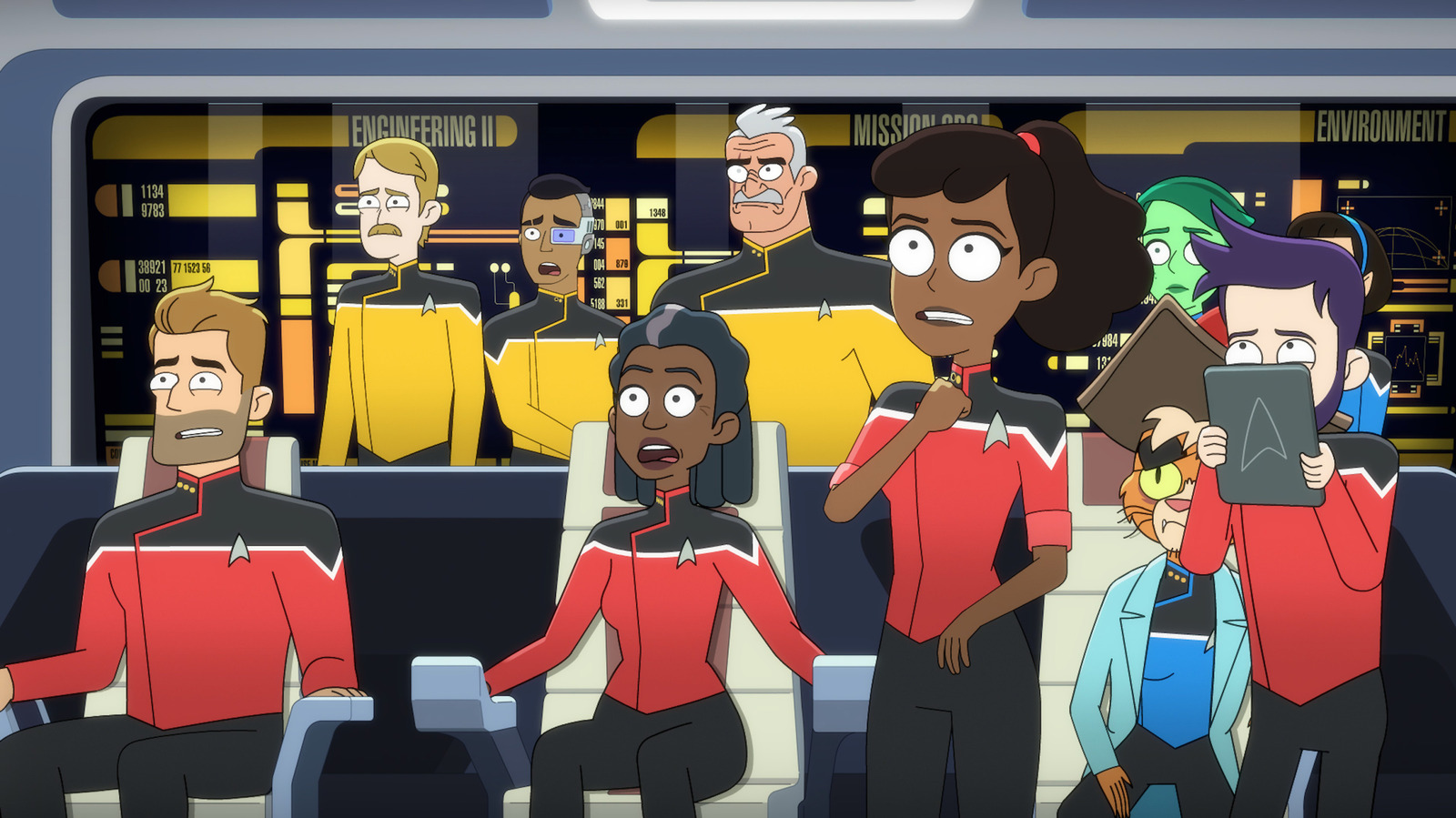Celebritiy
Lower Decks Finale Celebrates Starship Enthusiasts

In the highly anticipated series finale of Star Trek: Lower Decks, titled “The New Next Generation,” the crew of the U.S.S. Cerritos faces a critical mission: they must negotiate a massive rift in the space-time continuum. This aged vessel, though not the most advanced, is the only Starfleet ship available to address the looming crisis, which threatens to tear apart the very fabric of space. As the Cerritos makes its way towards the rift, it encounters intense waves of twisted semi-interdimensional space that create a whimsical yet perilous situation.
Each wave alters the ship in surprising ways, transforming the Cerritos into various versions of itself drawn from the rich lore of Star Trek. While the crew remains shielded and largely intact throughout the transformations, the ship fluctuates in size and capabilities, creating both advantages and challenges for the crew as they grapple with their vessel’s ever-changing nature. This clever plot device serves to delight devoted fans with plenty of insider references and nostalgic nods.
Among the standout transformations, one notable change sees the Cerritos morph into a Terran warship, complete with formidable weapons that security officer Shaxs eagerly anticipates using, only to see them ineffective when needed. This world, known for its darker, more militaristic tone, was introduced in the classic Star Trek episode “Mirror, Mirror” aired in 1967. As the ship’s exterior shifts to a striking hawk-like design, it’s clear that the Cerritos is fully embracing this brief alter ego.
Following this transformation, the Cerritos becomes a Sovereign-class starship, characterized by its sleek design reminiscent of the U.S.S. Enterprise-E featured in the films such as Star Trek: First Contact and Star Trek: Nemesis. This class is noted for its speed, drawing comparison to its predecessor, the more beloved Galaxy-class vessels like the iconic Enterprise-D.
As the narrative progresses, the Cerritos makes yet another switch, this time to an Oberth-class vessel—a model primarily utilized for research that debuted in Star Trek III: The Search for Spock. These ships, often relegated to background appearances, add a layer of charm to the episode’s unfolding chaos.
In a triumphant twist, the Cerritos transforms once more into a Galaxy-class starship, immediately calling to mind the Enterprise-D. Known even to casual fans, this ship’s legacy is well-established, having been in service until its demise in Star Trek Generations.
Shortly after, the Cerritos turns into a Miranda-class vessel, a reliable species like the U.S.S. Reliant from Star Trek II: The Wrath of Khan. Despite its somewhat dated design, the Miranda-class persists in the franchise’s universe, underscoring its durability even in the far future.
Alas, one of the beloved ship classes, the Olympic-class medical vessel, is notably absent from the episode’s rapid transformations, leaving some fans yearning for its inclusion. Nevertheless, after navigating through these incredible adventures, the Cerritos ultimately reverts to its original California-class design, a ship that may not be cutting-edge but is familiar and well-loved by its crew.
As the dust settles, the Cerritos crew emerges victorious, with another crisis averted in true Starfleet fashion. Fans can now revisit all the antics and nostalgia of Star Trek: Lower Decks, streaming now on Paramount+.
